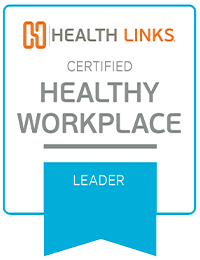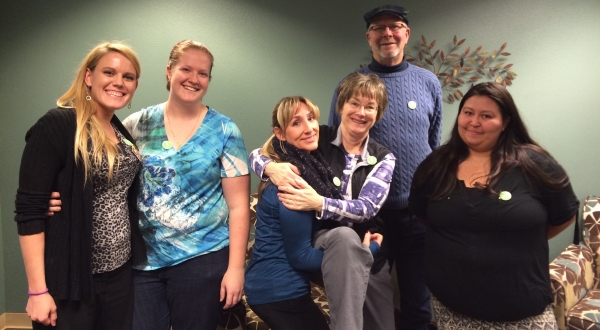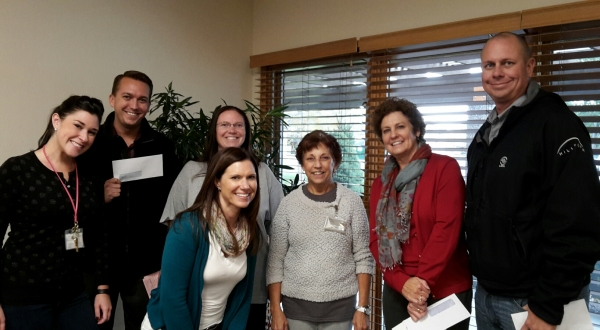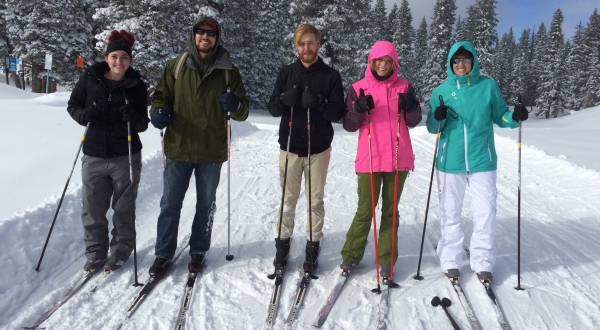
Health Links (HL): Why did your business decide become a Health Links Certified Healthy Business?
Hilltop Community Resources (HCR): Over the past six years, we have seen the value of our wellness program grow exponentially. Not only have we saved a significant amount of money in healthcare and workers’ comp costs, but we have seen our culture transform and individual lives improve as our employees feel supported in their pursuits to discover their healthiest potential. We want others in our community to know how much we value our employees’ wellbeing and that we are advocates in the community for worksite wellness.
HL: What benefits did the certification bring to your business?
HCR: Certification validates the large investment we make in employee wellness by demonstrating we are leaders in the community when it comes to valuing worker health and safety. Community members and potential employees are aware of our commitment to wellness more than ever before.
HL: Has this certification changed the way your business thinks about wellness and safety?
HCR: We have always taken a unified approach to wellness and safety, including it as part of our strategic business plan, but after certification, we increased the level of integration we have between our Wellness, Safety, Risk and Workers’ Comp departments, forming what we call a Super Wellness Team. This team is comprised of leaders from each department who work together to maximize the health and safety of our employees by identifying where our programs overlap and how we can support each other’s’ efforts.
HL: Has the Health Links certification or your wellness program affected your surrounding community?
HCR: After creating and implementing our own wellness program, we have been excited to share what we know with other organizations in our community. With the added credibility of being Health Links Certified, we have been become a go-to resource in the community for other organizations that need support with their own programs
Hilltop is a direct service non-profit organization serving more than 20,000 individuals each year in Mesa, Delta, Montrose and Ouray counties. Since 1950, it has provided everything from prenatal care for expectant mothers to assisted living for the elderly. Hilltop's various programs address disease prevention, enhanced quality of life, education and self-sufficiency.
Health Links (HL): Why is the health and wellness of your employees important to you?
Hilltop Community Resource Center (HCRC): Hilltop's corporate value of "Putting People First" not only informs its decisions in the community it serves, but also drives its internal programs and policies to best serve its employees. Health and wellness have become more than just an idea; they are driving forces in Hilltop's culture by engaging employees in healthy behaviors, helping individuals feel valued and engaged, and reducing the barriers employees face in achieving their healthiest potential.
HL: How will you/do you know your program is successful?
HCRC: We have seen a substantial reduction in health care costs and workers' compensation premiums, currently coming in over 40% under budget in healthcare and earning a very low workers' comp premium modifier. Through annual health risk assessments, we have measured health improvements such as lower blood pressures, lower cholesterol, and increased physical activity. Through other metrics we have demonstrated increased engagement, increased productivity, improved happiness scores and lower rates of high stress in our employees. We are confident that our health, safety and wellness interventions have not only improved our organizational health, but have transformed our culture.
HL: What obstacles did you have to overcome to get your program started? How did you overcome them?
HCRC: Because we had a high degree of support from senior leadership, the biggest obstacle to overcome was employee buy-in company-wide. Hilltop understood that an individual's health is a private matter, and because of this, took active steps to address employee concerns of intrusiveness and lack of privacy. Through educational campaigns and targeted messaging about Hilltop's privacy standards as well as taking the time to build trusting relationships, in five years we have increased participation by over 50%.
HL: Do you incorporate safety along with your wellness program? If so, what does this look like?
HCRC: Hilltop began collaborating with the safety team three years ago, forming a "Super SWAT" (Safety Works at All Times) team of individuals who brainstorm ways to launch joint initiatives across the organization. We have both a dedicated Wellness Coordinator and Safety/Risk Management Coordinator that work closely together, taking a comprehensive approach to promoting employee well-being.
HL: What tip/advice would you give to a business that is considering starting a workplace wellness program?
HCRC: The best advice for a business considering workplace wellness implementation is to approach wellness with broad, long-term goals rather than short-sighted cost-savings-only measures. If the goal is to make lasting cultural changes within your organization, cost savings may not be realized immediately. But if you use other metrics to measure success, such as employee satisfaction and engagement, you will see other important examples of progress. Once these changes take root at a fundamental level, cost savings and productivity will follow and be more likely to continue. Ultimately, if the values of health, wellness and safety drive the way you do business rather than exist as isolated programs, you will have a successful program.




